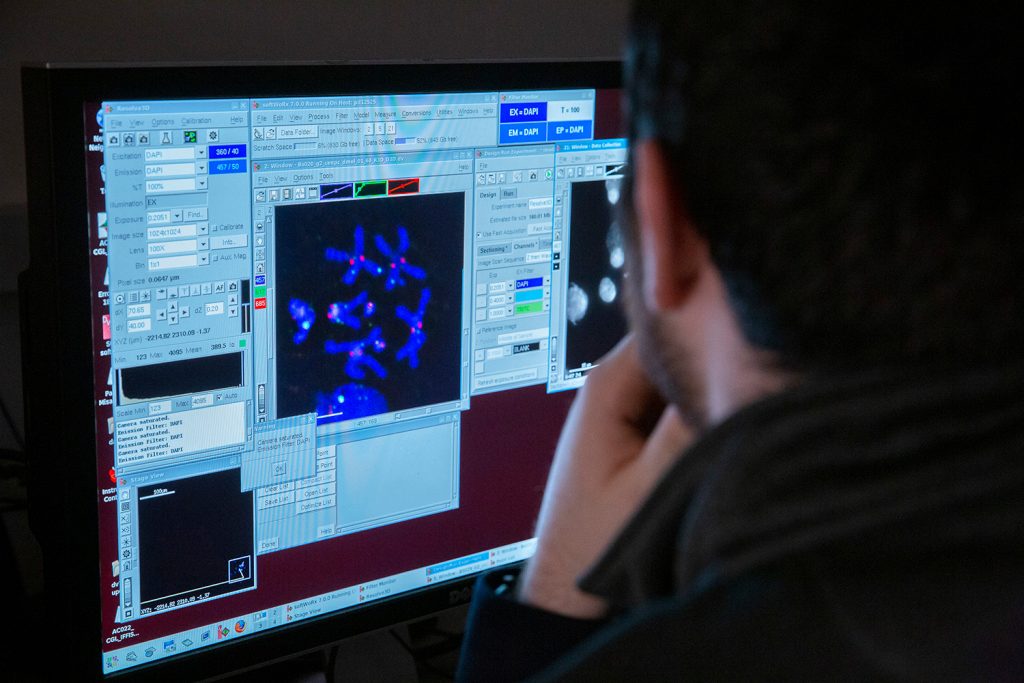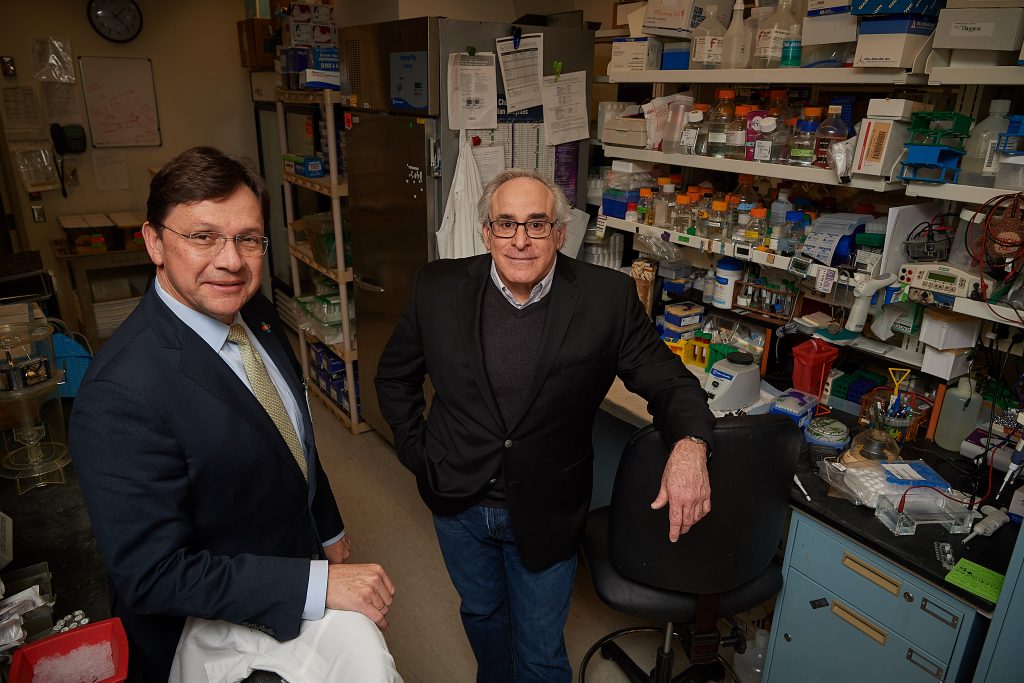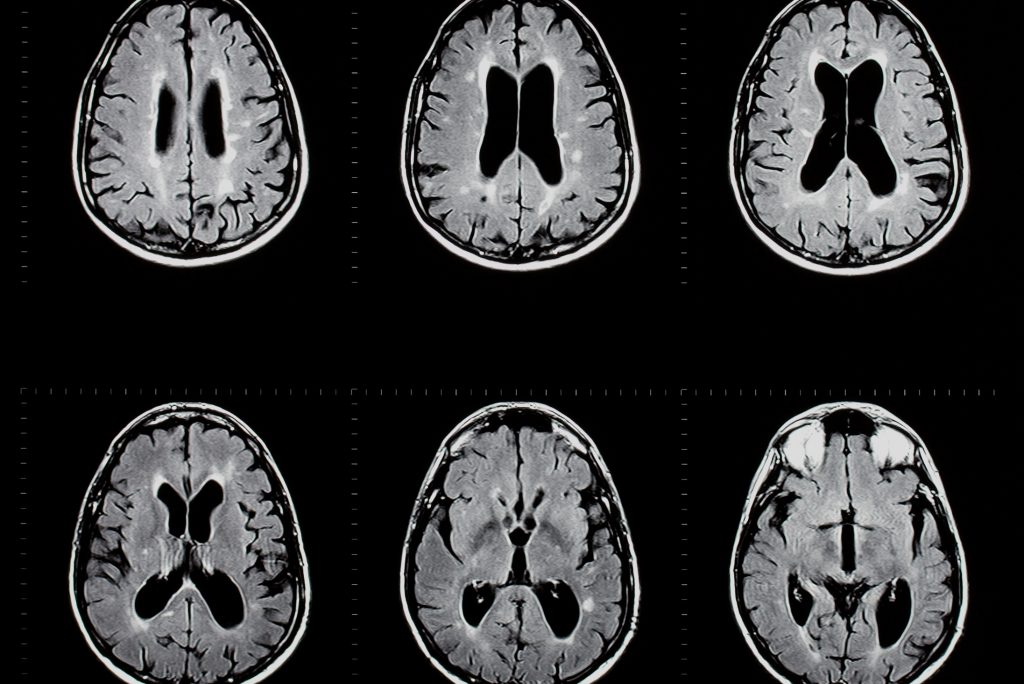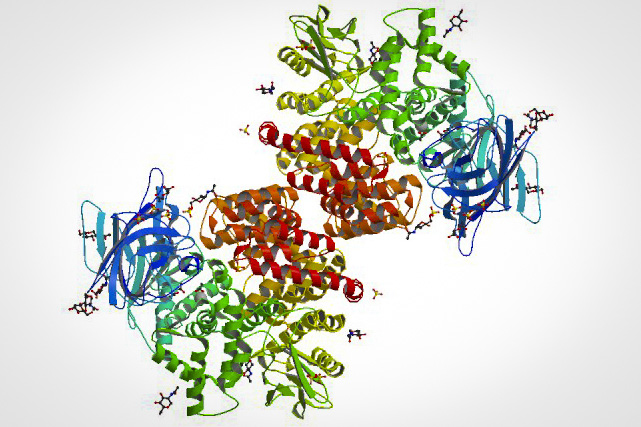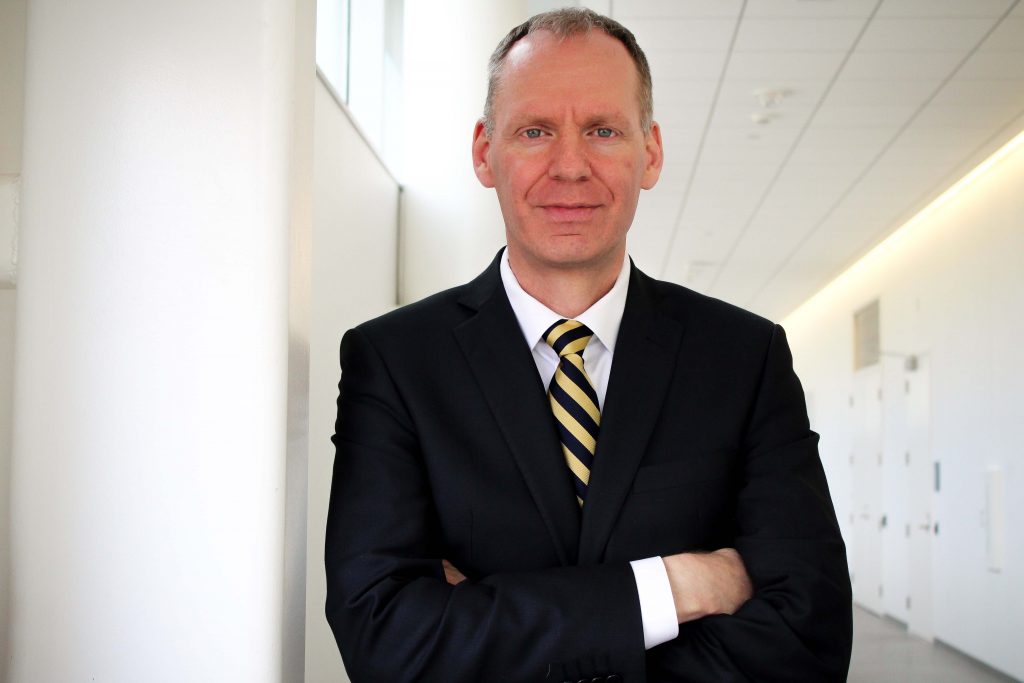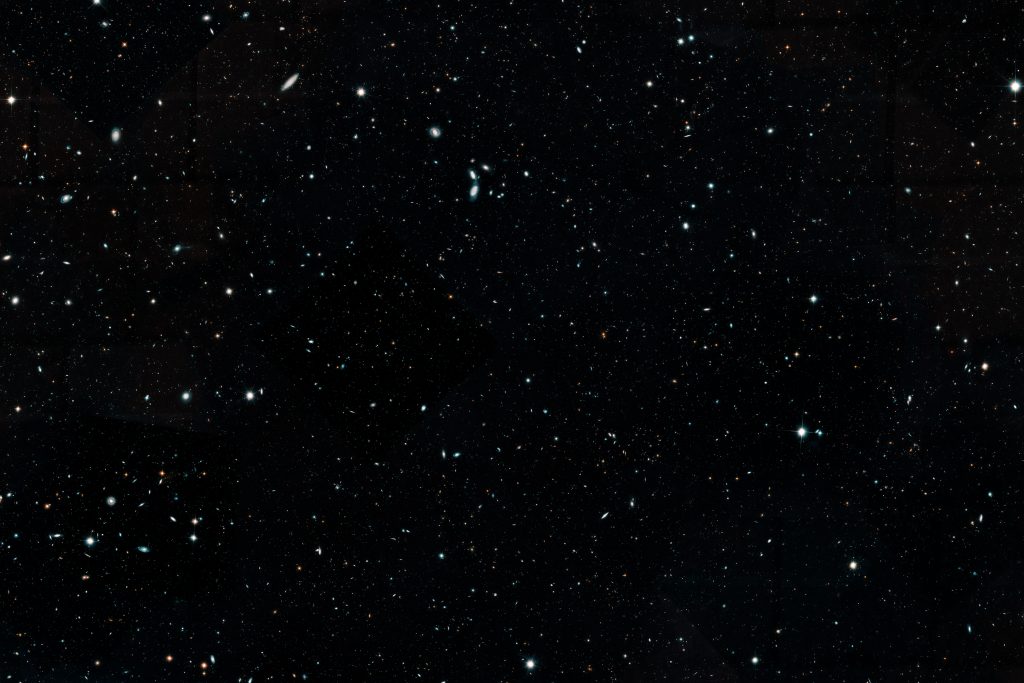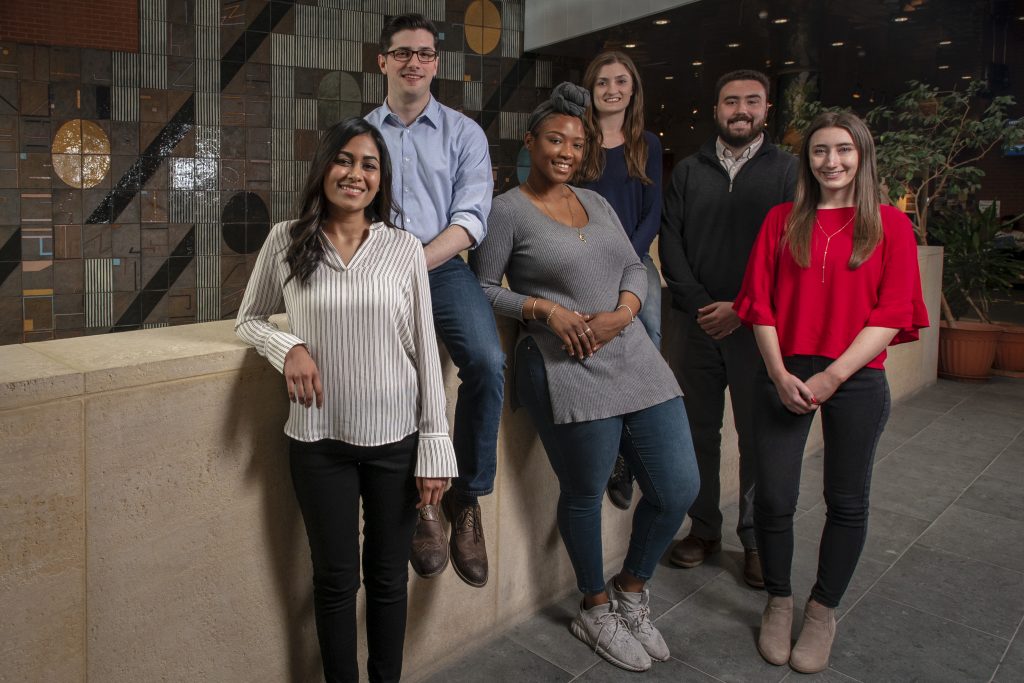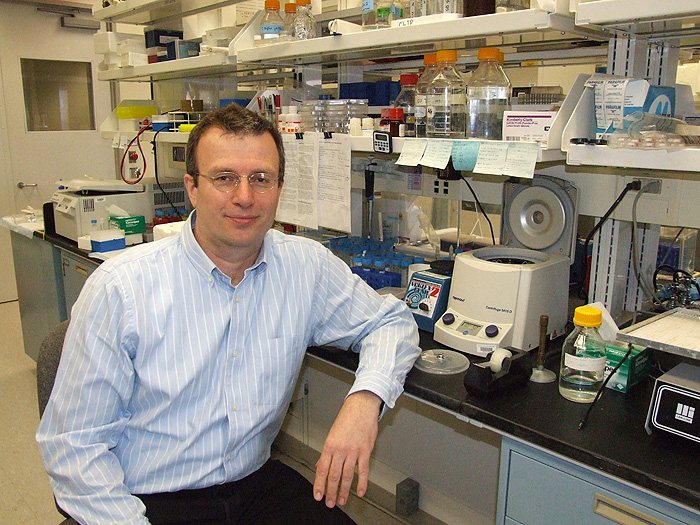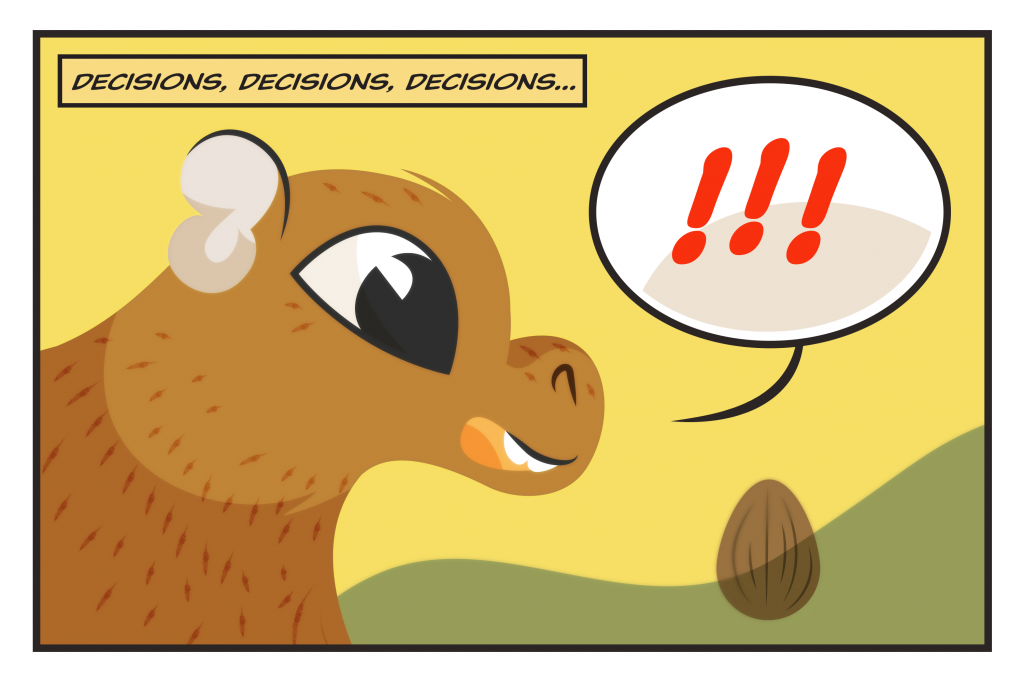Research & Discovery
Study Unlocks Secrets of an Elusive Genome Compartment
A new study by UConn and the University of Rochester shows that genetic elements may play a larger role in centromere function than researchers previously thought.
May 14, 2019 | Combined Reports
UConn Health Leads International Center to Develop Syphilis Vaccine
“An effective syphilis vaccine would represent a triumph for biomedical research over an ailment that has defied conventional public health strategies for prevention and control,” says Dr. Justin Radolf of UConn School of Medicine.
May 10, 2019 | Jessica McBride, PhD
A New Culprit for Multiple Sclerosis Relapses
A molecule that helps blood clot may also play a role in multiple sclerosis relapses, according to a new study by a team that included researchers from UConn Health
May 9, 2019 | Kim Krieger
Missing Molecule Hobbles Cell Movement
A new UConn study finds that cells missing a certain protein on their surface can’t move normally, with implications for wound repair as well as the spread of cancer.
May 6, 2019 | Kim Krieger
Solving Problems in 3D
Finding real-world solutions for industry, utilizing highly specialized equipment, training the future innovation workforce – it's all in a day's work for Rainer Hebert, director of the Pratt & Whitney Additive Manufacturing Center at UConn Tech Park.
May 3, 2019 | Anna Zarra Aldrich '20 (CLAS), Office of the Vice President for Research
Meet the Researcher Solving Problems in 3D
We’ve all watched videos, mesmerized, while a machine adds layer upon layer to 3D print anything from a model of the Eiffel Tower to a rubber duck. Aside from being really cool, this technology has tremendous implications for revolutionizing companies’ manufacturing processes. Under the leadership of Castleman Term Associate Professor in Engineering Innovation Rainer Hebert, […]
May 3, 2019 | Anna Zarra Aldrich '20 (CLAS), Office of the Vice President for Research
Astronomers Assemble View of Evolving Universe
UConn astronomer Katherine Whitaker played a lead role in cataloging deep space images from 16 years’ worth of Hubble Telescope observations. The resulting mosaic, a composite of nearly 7,500 separate exposures, helps tell the history of the universe.
May 2, 2019 | Donna Weaver & Ray Villard, Space Telescope Science Institute
Eleven Young Scientists from UConn Win NSF Graduate Fellowships
'The NSF Graduate Research Fellowship is the gold standard when it comes to federally-funded fellowships for aspiring scientists,' says the director of UConn’s Office of National Scholarships & Fellowships.
May 2, 2019 | Mike Enright '88 (CLAS), University Communications
Making In-Roads with Parasite Introns
UConn Health researcher Arthur Günzl has received a $450,000 grant from the NIAID to investigate the role of introns in a class of parasites responsible for several tropical human diseases: sleeping sickness, Chagas’ disease, and leishmaniasis.
May 2, 2019 | Anna Zarra Aldrich '20 (CLAS), Office of the Vice President for Research
This Animal Bit onto ‘Science Cookies’ and Revealed Data
An experiment using artificial seeds, or 'cookies,' with peanuts hidden inside provided valuable information about how mammals make seed dispersal decisions based on certain seed traits.
April 30, 2019 | Elaina Hancock
